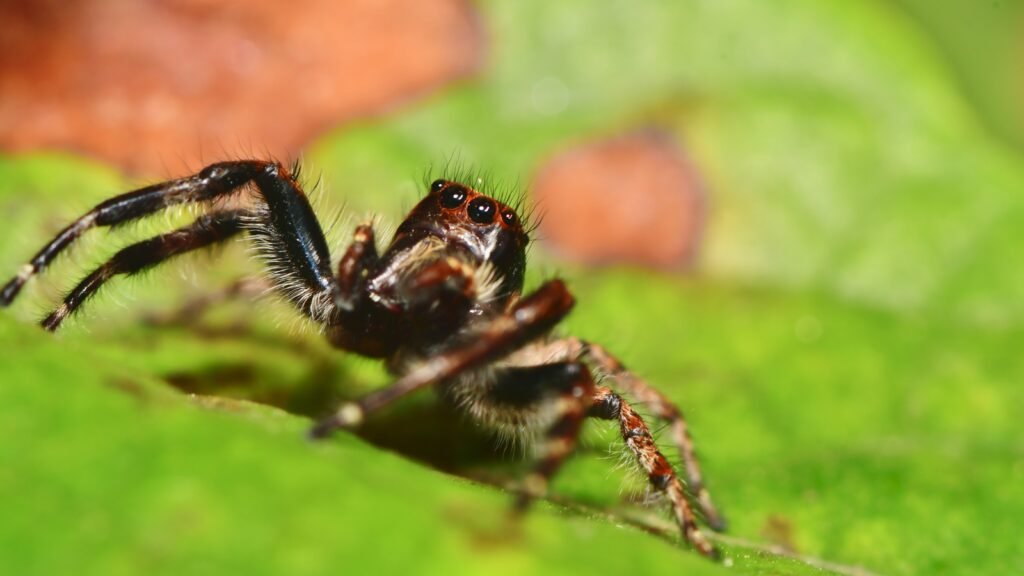Tarantulas, these fuzzy and intriguing creatures that often send shivers down our spines, have long fascinated us with their unique appearance and behavior. But have you ever wondered if our own activities pose a threat to these eight-legged wonders? While we may not always realize it, human actions can indeed impact tarantulas in various ways. From habitat destruction and pollution to direct interventions like collecting and illegal trade, our actions can disrupt their delicate ecosystems and pose significant risks to their survival. In this article, we will explore and shed light on the potential threats that tarantulas face from human activities, highlighting the importance of conservation efforts to coexist harmoniously with these captivating arachnids.

Overview
What are tarantulas?
Tarantulas are large, hairy spiders belonging to the family Theraphosidae. They are found in various parts of the world, including the Americas, Africa, and Asia. These fascinating creatures have become a subject of both curiosity and fear due to their intimidating size and appearance. Despite their reputation, tarantulas play a vital role in ecosystems and deserve our attention and protection.
Importance of tarantulas in ecosystems
Tarantulas are not just creatures to be feared, but they also serve important ecological roles in their respective habitats. As carnivorous predators, they help control the populations of other insects and arthropods. By keeping the numbers of these smaller creatures in check, tarantulas contribute to maintaining the delicate balance within their ecosystems. Additionally, they serve as a food source for larger predators, playing a critical role in the food chain.
Significance of studying threats to tarantulas from human activities
Understanding the threats facing tarantulas from human activities is crucial for their conservation and the preservation of their habitats. By comprehending the negative impacts that human actions can have on tarantulas, we can take appropriate measures to mitigate or eliminate these threats. Through targeted conservation efforts, we can ensure the long-term survival of these fascinating creatures and the ecosystems they inhabit.
Habitat Loss
Deforestation and tarantula habitats
Habitat loss, particularly through deforestation, poses a major threat to tarantulas. Forests provide the ideal environment for these spiders, with the dense vegetation and ample prey availability. However, due to human activities such as logging and agriculture, vast areas of forests are being destroyed, depriving tarantulas of their natural habitats. As their homes disappear, tarantulas face increased vulnerability and a higher risk of extinction.
Urbanization and destruction of tarantula habitats
Rapid urbanization and the expansion of human settlements are further exacerbating the loss of tarantula habitats. As cities expand, natural landscapes are converted into concrete jungles, leaving little room for these creatures to thrive. The destruction of natural habitats for infrastructure development leads to the fragmentation of tarantula populations and limits their ability to disperse, find mates, and maintain genetic diversity. This loss can have far-reaching consequences for their survival.
Illegal Collection and Trade
Demand for tarantulas in the exotic pet trade
The exotic pet trade has become a significant driver of the illegal collection and trade of tarantulas. Due to their unique appearance and captivating behavior, tarantulas have gained popularity among collectors and enthusiasts. The demand for rare and exotic species fuels the illegal trade, as individuals seek to profit from capturing and selling these spiders. Unfortunately, this enthusiasm for the exotic pet trade often comes at the expense of wild populations, where indiscriminate trapping depletes tarantula numbers.
Negative impacts of illegal collection on tarantula populations
The illegal collection of tarantulas has severe consequences for their populations and ecosystems. Many tarantula species have slow reproduction rates, making them particularly vulnerable to overexploitation. Indiscriminate collection often targets adult specimens, leaving behind fewer breeding individuals to ensure population growth. This disruption can have cascading effects on the ecosystem, as tarantulas no longer perform their crucial ecological roles, leading to imbalances that may negatively impact other species.
Pollution
Pesticides and their effects on tarantulas
Pesticides used in agricultural practices pose a hidden threat to tarantulas. These chemicals, designed to control pests on crops, can inadvertently harm non-target species such as tarantulas when they come into contact with them. Pesticides can contaminate tarantula habitats when they are sprayed nearby, leading to direct mortality or indirectly affecting their health and reproductive success. The long-term accumulation of pesticides in the environment further jeopardizes tarantula populations and their habitat quality.
Industrial pollution and contamination of tarantula habitats
The release of pollutants from industrial activities contributes to the degradation of tarantula habitats. Chemical discharges, air pollution, and the improper disposal of waste can contaminate soil, water, and vegetation in and around tarantula habitats. These pollutants can have toxic effects on tarantulas and their prey, causing physiological damage, reproductive issues, and population decline. The cumulative impact of industrial pollution further adds to the challenges faced by tarantulas.

Climate Change
Impact of climate change on tarantula habitats
Climate change poses significant challenges for tarantulas and their habitats. Changes in temperature, rainfall patterns, and humidity levels can disrupt the delicate balance these creatures rely on for survival. Tarantulas are highly adapted to specific climatic conditions, and even slight shifts in these parameters can have profound impacts on their ability to thrive. As habitats become unsuitable due to changes in climate, tarantulas are forced to either adapt or face extinction.
Increased frequency of extreme weather events and its implications for tarantulas
Climate change also brings about an increase in the frequency and intensity of extreme weather events, such as hurricanes and droughts. These events can have devastating effects on tarantula populations. The destruction of their habitats and the loss of food sources in the aftermath of such events can lead to significant declines in tarantula numbers. The ability of tarantulas to recover from these disturbances is often hindered by ongoing human activities and habitat fragmentation.
Roads and Infrastructure
Fragmentation of tarantula habitats by roads
The construction of roads and other infrastructure acts as a barrier, fragmenting tarantula habitats. As roads are built, they divide habitats into smaller, isolated patches, disrupting the natural movements and dispersal of tarantulas. This fragmentation restricts gene flow among populations and can lead to decreased genetic diversity and the risk of inbreeding. Furthermore, severed habitats can limit the availability of suitable habitats for tarantulas, reducing their resilience and adaptability to changing environments.
Direct mortality from vehicular traffic
Roads not only fragment tarantula habitats but also pose a direct threat to their survival through vehicular traffic. Tarantulas, with their low mobility and slow movement, are particularly susceptible to becoming victims of roadkill. The increased presence of roads near tarantula habitats means a higher incidence of tarantulas being struck and killed by vehicles. This mortality rate can significantly impact local populations and undermine conservation efforts.
Introduction of Non-Native Species
Competition and predation by non-native species
The introduction of non-native species to tarantula habitats can lead to increased competition and predation. Invasive species, whether intentional introductions or accidental arrivals, can disrupt the balance of native ecosystems by outcompeting tarantulas for resources such as food, shelter, and breeding sites. Additionally, some invasive species may prey on tarantulas or their eggs, further threatening their populations. The establishment of non-native species can have devastating ripple effects throughout the ecosystem.
Spread of diseases facilitated by non-native species
Non-native species can also act as vectors for diseases that can harm tarantulas. As these species are introduced into new environments, they may bring with them pathogens and parasites that tarantulas have not evolved to resist. These diseases can rapidly spread through tarantula populations, causing disease outbreaks and mass mortality events. The introduction of non-native species can therefore have not only direct ecological impacts but also indirect consequences in terms of disease transmission.
Loss of Prey Base and Prey Competition
Overexploitation of tarantula prey by humans
Tarantulas heavily rely on certain prey species for their survival. Unfortunately, human activities such as commercial harvesting and collection of insects, especially those used as live food for pets, can deplete the populations of tarantula prey. This reduction in prey availability can have detrimental effects on tarantulas, leading to malnutrition, decreased reproductive success, and reduced population sizes. It is crucial to balance human needs with the conservation of tarantula prey species to ensure the continued survival of these spiders.
Competition for resources with invasive species
In addition to human-induced overexploitation, tarantulas also face competition for resources from invasive species. Non-native insects, which thrive in disturbed environments and can reproduce quickly, often outcompete native prey species. This competition for limited resources further exacerbates the challenges faced by tarantulas, compromising their ability to secure an adequate food supply. As the balance shifts in favor of invasive species, tarantulas may struggle to adapt and survive in an altered ecosystem.

Human Fear and Persecution
Misconceptions and fear leading to tarantula persecution
Tarantulas often evoke fear and negative associations in humans, primarily due to their large size and venomous reputation. These misconceptions have led to the persecution of tarantulas, with individuals resorting to killing or removing them from their natural habitats out of fear. Such actions have lasting impacts on tarantula populations, as they reduce the available habitats and disrupt the ecological processes that tarantulas contribute to. It is essential to dispel misconceptions and promote understanding and coexistence.
Impact of fear on conservation efforts
The fear and negative perception surrounding tarantulas can have detrimental effects on conservation efforts. Public fear and aversion can hinder community participation in conservation initiatives, making it challenging to garner support and resources for the protection of these spiders. Education and awareness programs aimed at dispelling myths and fostering appreciation for tarantulas are crucial in overcoming fear and gaining public support for their conservation.
Conservation Measures
Protected areas and their role in tarantula conservation
Establishing and effectively managing protected areas is vital for the conservation of tarantulas. These designated regions provide refuge for tarantula populations, allowing for the preservation of their habitats and the species that depend on them. Protected areas also aid in maintaining genetic diversity and facilitating the natural movements and interactions of tarantulas. Collaboration between governments, conservation organizations, and local communities is essential to ensure the sustainable management of these protected areas.
Education and awareness programs
Education and awareness play a key role in promoting the conservation of tarantulas. By informing the public about the ecological importance of tarantulas and dispelling misconceptions, we can foster a positive perception and appreciation for these creatures. Educational programs can be targeted at schools, community groups, and the general public, highlighting the value of tarantulas and the need for their protection. Creating a sense of empathy and understanding is crucial in generating support for conservation efforts.
Regulation of the exotic pet trade
Regulating the exotic pet trade is essential to curb the illegal collection and trade of tarantulas. Implementing strict regulations and enforcing international agreements can help reduce the demand for wild-caught tarantulas and discourage illegal activities. Additionally, promoting responsible pet ownership and encouraging individuals to consider adopting captive-bred tarantulas rather than supporting the wild trade can help alleviate pressure on wild populations. Collaborative efforts between governments, enforcement agencies, and the pet trade industry are necessary for effective regulation and enforcement.


